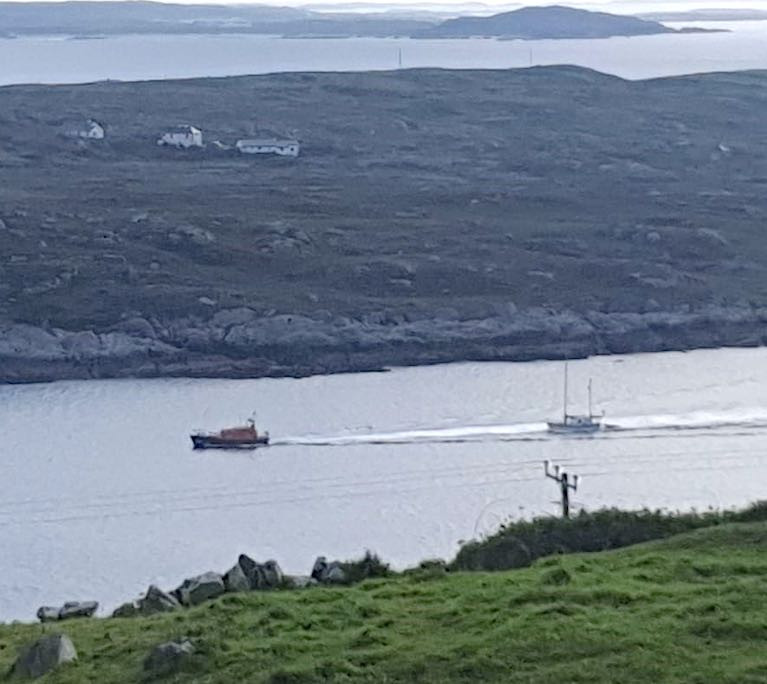Clifden RNLI has rescued a sailor who got into difficulty on a 36ft yacht this afternoon. The volunteer lifeboat crew were requested to launch at 3.20 pm by the Irish Coast Guard following a report that a yacht was in difficulty somewhere between Cleggan and Inishbofin Island.
As communication with the casualty was poor initially, a decision was made to launch Clifden RNLI’s inshore lifeboat in addition to the station’s all-weather lifeboat.
Weather conditions at the time were fair with a Force 3 northerly wind and a slight sea.
The inshore lifeboat helmed by Daniel Whelan arrived on scene first, some 10 miles from Clifden. The lifeboat crew assessed the situation and checked that the one man onboard was safe and well. A crew member then transferred onto the yacht to set up a tow.
 The yacht under tow by Clifden RNLI
The yacht under tow by Clifden RNLI
On arrival of the all-weather lifeboat under Coxswain John Mullen, the tow was passed from the inshore lifeboat to the all-weather lifeboat. The all-weather lifeboat then towed the yacht safely back to shore with the Atlantic 85 lifeboat alongside.
Speaking following the call out, Clifden RNLI Coxswain John Mullen said: ‘We would like to commend the sailor for raising the alarm when he got into difficulty, that is always the right thing to do, and we would like to wish him a safe onward journey.
‘As the summer continues and we enjoy some good weather, we would remind everyone regardless of their activity at sea, to always respect the water. Always wear a lifejacket, always have a means for calling and signalling for help and ensure everyone onboard knows how to use it. Always check the weather forecast and tide times before heading out and make sure someone on the shore knows where you are going and when you are due back. Should you get into difficulty or see someone else in trouble, dial 999 or 112 and ask for the Coast Guard.’































































